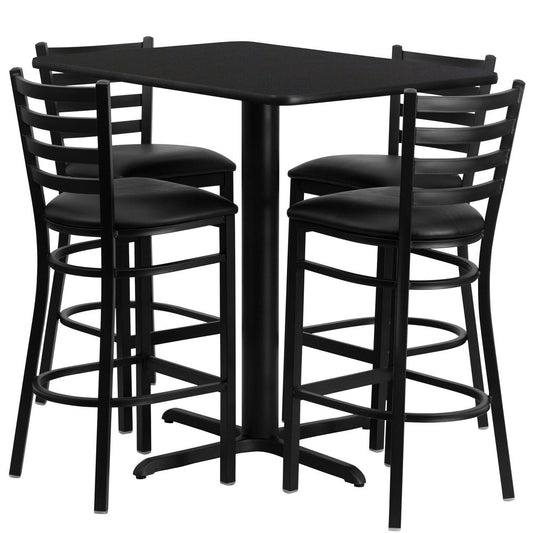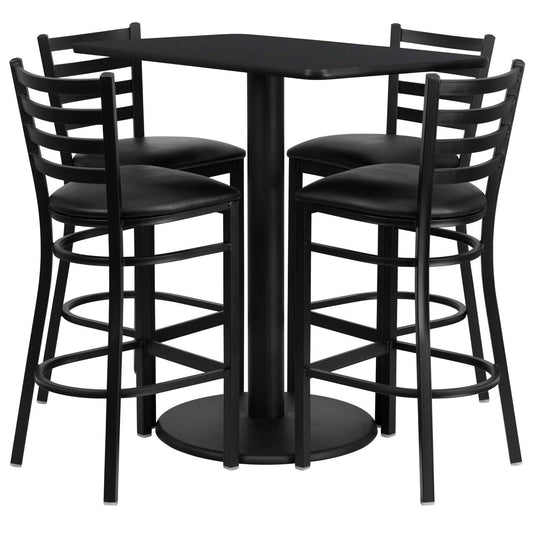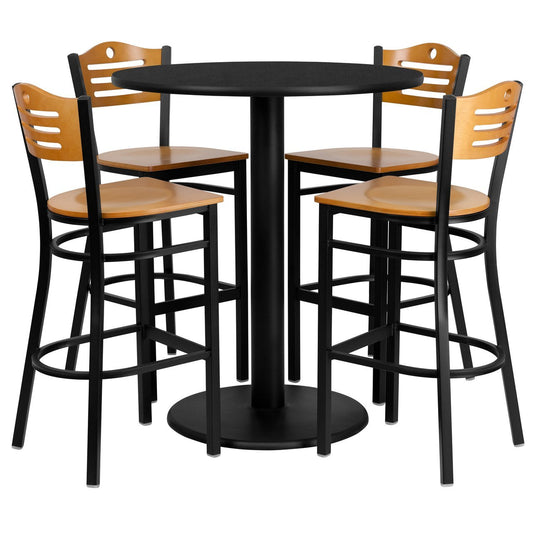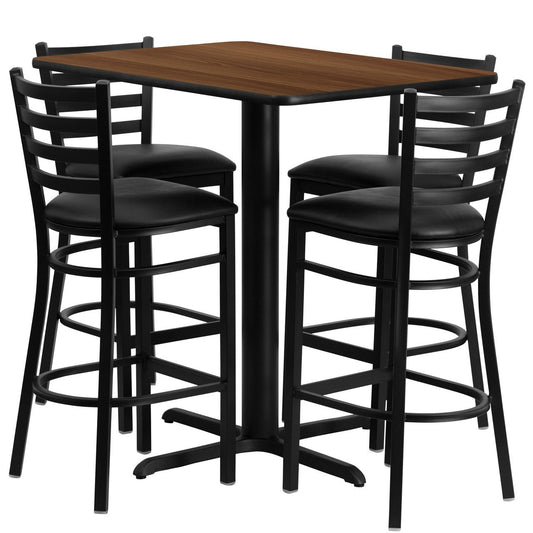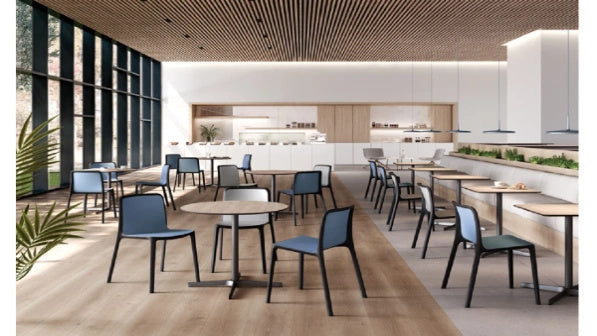
Top Materials for Long-Lasting Cafeteria Chairs
Share

Choosing chairs is a very important decision in the case of cafeterias. So these forms of furniture require the furniture to be both sturdy and soft, as well as have the ability to withstand heavy use. If you are a school superintendent and manage a cafeteria, if you are an employer and rent out an office lunchroom, or if you are a professional cafeteria looking to design your cafe, it is very important to know what kind of material should be used to make cafeteria chairs durable and efficient. This article will provide you with information about the best materials for durable cafeteria chairs such as stackable stools, metal bar stools, and other types of chairs.
The Importance of Choosing the Right Material
Cafeteria chairs are used and abused on a day to day basis and therefore strong materials are needed to make these chairs. These are resilient and have to go through – spills, stains, excessive moving, and even being stacked on top of each other. Moreover, call traffic in cafeterias is always high, hence there is a need for chairs that can withstand heavy traffic. Selecting the proper material also helps in increasing the durability of the chairs apart from improving the dining experience.
Top Materials for Long-Lasting Cafeteria Chairs
1. Metal - Top Choice for Durability and Style
- Metal chairs are preferred because they are easy to maintain and are equally durable. This means that they handle a lot of wear and tear without getting damaged or destroyed easily. There are several types of metal used in cafeteria chairs:
- Steel: The use of steel for metal cafeteria chairs is preferred because steel is stronger and more durable than other materials. It has the characteristic of being impact-resistant and can withstand a large amount of load. Some models supplied with folded sheets have powder paint, which enhances the protection of the chairs against rust and scratches.
- Aluminum: Another type of chair ideal for this purpose is aluminum chairs, although they are lightweight they are very strong. They are especially convenient to use where the chairs are moved from time to time such as outdoor cafeterias or dining sections with flexible configurations. Aluminum is also non-corrosive and thus is used in both indoor and outdoor applications.
- Stainless Steel: Stainless steel chairs are also very popular as they are more fashionable and at the same time very strong. The products are also highly resistant to rust and corrosion, thus very ideal for high-traffic areas. They shine which means their surface is easy to clean and thus suitable for the usual busy cafeterias.
2. Wood - Classic Choice for Elegance and Endurance
There is no denying that wooden chairs are more pristine and comfortable for places like cafeterias. They are durable, but if well maintained they can last for a long time. It should be noted that wood is comparatively more susceptible to leaks and moisture if the surface is not properly sealed or varnished. Several types of wood are commonly used:
- Hardwood: Popular types of wood used for cafeteria chairs are oak, maple, and cherry wood because they are very strong and have a long lifespan. Whereas, hardwood chairs are more durable; they can be sanded and polished if they look like signs of age.
- Plywood: Although, to some extent, it is expensive, in practice Modern plywood chairs are often used, for example, instead of plywood. It is denser than plywood but much less than solid wood while offering a medium to low level of durability. Plywood chair designs nowadays have an outer facing veneer that can be made to look like hardwood furniture.
3. Plastic - Blend of Affordability and Versatility
Plastic chairs are available in different colors and designs that will suit the different themes of the cafeteria where it is used. Modern types of plastic are generally designed to be highly resistant to the wear and tear of daily use as well as being easily washable. Some of the advantages of plastic chairs are as follows:
- Lightweight: These types of chairs, especially plastic ones can be easily moved around and rearranged to create the required seating arrangement in the cafeteria. For example, stackable stools can be arranged or kept off the floor whenever they are not in use.
- Durable: Non-textile materials used for cafeteria chairs include high-density polyethylene (HDPE) and polypropylene. It is less permeable to stains, scratches, and impact, so it is ideal for areas with a lot of traffic.
- Maintenance: Plastic chairs are easy to clean and do not allow food particles to stick or spill on them, making them particularly suitable for use in cafeterias in terms of hygiene.
4. Upholstered - Ultimate in Comfort and Elegance
The use of upholstered chairs will provide additional comfort that can have a positive effect when dining in a cafeteria. This usually consists of fabric seats with special backs, although some designs may not have backs. However, upholstery requires more maintenance than other materials:
- Fabric Upholstery: Commonly used fabrics include vinyl, faux leather, as well as fabrics used in commercial establishments. These are materials that are usually very durable and do not stain easily. Two, vinyl and faux leather materials are very easy to clean and hence good for cafeterias.
- Foam Padding: High-density foam is used for cushioning as will be mentioned in the following sub-topics. It provides support as well as maintains the structure so that it does not become loose after some time. Proper foam has great potential to protect upholstered chairs from getting worn out quickly.
What Material Are Cafeteria Tables Made Of?
Cafeteria tables are made from a variety of materials, each of which offers its benefits:
- Laminate: Furniture such as laminate tables is very fashionable nowadays because they are hardwearing and easy to clean. It is available in a wide range of colors and designs and does not stain, scratch, or dent easily.
- Wood: Wood furniture has a traditional look and is durable. Wood tables are particularly the best because of their look and the fact that they are very sturdy. It can be varnished or painted like any other furniture used in a cafeteria.
- Metal: Luxury Metal stool and often a laminate or wooden top; some species are not sensitive to moisture, and others can be easily wiped clean. They are perfect for common-use areas and can be installed both indoors and outdoors.
- Plastic: Plastic chairs and tables are not as heavy as metal and wood and accordingly, they do not require frequent attention and cleaning. They are mostly preferred in restaurants that do not have a very standard and rigid format of operations about food and services.
Choosing the Best Chairs for Your Cafeteria
When choosing chairs for your cafe chair, consider the following factors:
- Durability: Choose a material that can withstand pressure and is not easily damaged. The most commonly used materials include metal as well as high-density plastic and wood because these are durable and easy to clean, especially where there is a lot of traffic.
- Comfort: If your cafeteria serves guests who sit for long periods, especially in meetings, it may make sense to include some upholstered chairs in the cafeteria. Multi-table size chairs or stackable and metal bar stools are ideal for decorating and converting into other types of seats.
- Maintenance: Choose materials that are easy to clean and wash as hygiene is an important consideration for many families. While plastic or metal chairs require less maintenance than an upholstered chair or a hardwood chair.
- Style: Your chairs should share the aesthetic of the cafeteria, which means you need to get the design of your chairs right. Depending on whether you prefer a sophisticated metal bar stool, an authentic rustic wooden cafe chair, or something else, check if it suits the décor of your dining area.
- Functionality: One has to think about the stackable design of the stools or chairs so that they can be stored conveniently and rearranged whenever needed. Stackable options are especially good if the area will be used as a seating or meeting area where guests can rearrange the furniture as they wish.
Conclusion
It is quite evident that the kind of material you choose for your cafeteria chairs has a great impact on their durability, comfort as well as ease of cleaning. Knowing the benefits of the type of material on the chairs whether it is metal, wood, plastic, or upholstered enables one to make proper choices that make the dining area more decorative and functional. Do not forget about the material used in the cafeteria table as well, as it must blend well with the cafe chairs, to create an environment that is both comfortable and efficient.
FAQs About Cafeteria Chairs
1. What materials are best for busy cafeterias?
Metal and plastic chairs are ideal for busy cafeterias due to their durability and ease of maintenance.
2. Are stackable stools practical for cafeterias?
Yes, stackable stools are practical as they save space and are easy to store when not in use.
3. Why choose metal bar stools for a cafeteria?
Metal bar stools are durable, easy to clean, and offer a modern look, making them suitable for high-traffic areas.
4. How do upholstered chairs compare to non-upholstered ones in maintenance?
Upholstered chairs require more maintenance due to potential stains, while non-upholstered chairs are easier to clean.
5. What’s the best material for cafeteria tables in high-traffic areas?
Laminate and metal tables are best for high-traffic areas because they are durable and easy to maintain.

